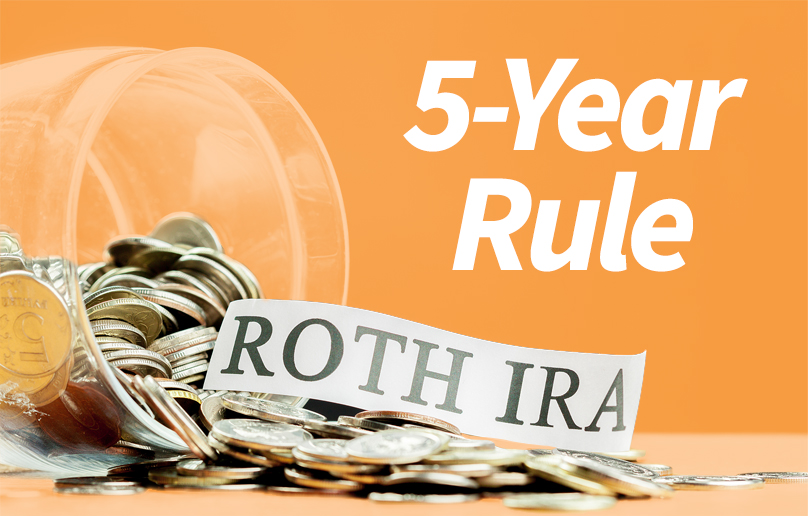Roth IRAs have become a popular option for flexible retirement planning. A benefit to this type of retirement account is the fact that contributions to a Roth IRA are always made with after-tax dollars. Because the contributions in a Roth IRA have already been taxed, withdrawals from that account are not taxable. Even if the contributions came from a conversion from, say a traditional IRA or 401(k), those funds are taxed at the time of conversion, and no additional taxation will occur upon withdrawal.
Because Roth IRA contributions are not taxable, they are also not subject to the IRS’ early withdrawal penalty, unlike most retirement accounts which have a set retirement age for beginning to use funds. Roth IRA account holders can withdraw the full amount of their contributions tax-free and penalty-free at any age for any purpose.
However, this tax exemption does not apply to earnings made through the retirement account. If the account holder is under age 59 ½ and has not held the account for at least five years, any earnings that are taken out are taxable at the current income tax rate.
That five-year marker acts as a tax liability test in three different circumstances:
- When you withdraw account earnings
- When you convert a traditional IRA (or other retirement account) into a Roth IRA
- When you inherit a Roth IRA
As mentioned above, if an account holder is withdrawing earnings and wants to avoid a tax penalty, they must do so after the date that they turn 59 ½ or at least five tax years after the first contribution to any Roth IRA they own. The five-year test goes by the earlier of those two dates to determine if the earnings are tax-free. If the taxpayer sets up additional Roth IRA accounts, those accounts are considered to have been held for as long as that first account. Rollovers from one Roth IRA to another also do not reset the five-year clock. However, the five-year countdown does start with a taxpayer’s first contribution to any Roth IRA, not just the one they are currently withdrawing from.
Second, if the taxpayer converts a traditional IRA to a Roth IRA, the five-year rule determines whether the distribution of principal from the conversion is penalty-free. Each separate conversion has its own five-year period, beginning on the calendar year when the conversion is made. So if the account was converted on January 1st, the five-year period for those converted funds is also going to start on January 1st. If the same account holder then later converts any other traditional IRA assets to a Roth IRA, the five-year rule will start on January 1st of that year.
Finally, if someone inherits a Roth IRA, they can take a distribution without incurring a penalty, whether the distribution is from principal or earnings. However, if that Roth IRA wasn’t held for five years by the original account owner, the earnings will be subject to tax as per the usual rule.
Several recent changes to tax law also impact IRA distributions. The new required minimum distributions rule requires a full payout from an inherited IRA within 10 years of the death of the original account holder. This rule takes effect starting in 2020 for any accounts inherited within that tax year or later. Under the new rules, the beneficiary can take a distribution each year or a lump sum at any point before December 31st. However, if that heir fails to empty the account within the 10-year withdrawal period, they will incur a hefty penalty.
The Secure Act also introduced new rules for Roth IRAs. Previously, anybody who inherited a Roth IRA could decide when they wanted to take those distributions over a lifetime. Under the new law, only a spouse has this level of flexibility. Any other beneficiary, like a child, has to close out that account within 10 years, per the ruling mentioned above.
Roth IRAs provide an appealing level of flexibility, especially for those looking to save for retirement without tying up those funds until retirement age. Taxpayers are often in need of guidance in deciding whether a Roth IRA is right for their expected financial needs. Increase your expertise in retirement tax planning by becoming a Certified Tax Planner.





